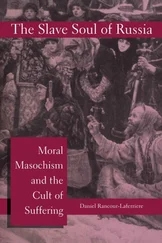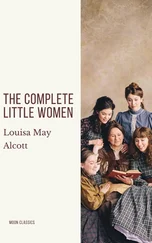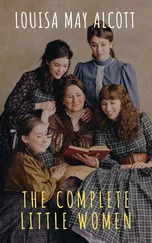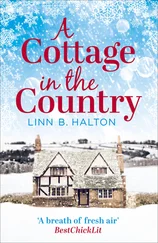These early antislavery English poems and tales share a number of traits, according to Oldfield. Firstly, slavery destroys the “tranquility of domestic life in Africa”; and secondly, the blacks’ characters are “faithful, honest, and resourceful,” and their gentility is “further enhanced by their eloquence,” since “except for the obligatory ‘massah,’ they speak in the manner of educated Englishmen” (Oldfield 145). Yet what is most relevant is the fact that these English authors are keen on rewriting the racist stereotypes of Africans as inhuman creatures and objects that stand as property. To do so, their texts engage dialogic patterns of contestation about the ongoing debates on the slave trade and slavery as an institution. Whether from ameliorationist or more progressive attitudes towards the abolition of the slave trade and slavery, they try to aggrandize Africans’ dwarfed ontological status by transforming them into controversial examples of Western enlightened virtuosity and citizenry.
AMERICAN ABOLITIONIST WRITINGS FOR CHILDREN
Canonical accounts of childhood highlight the beginning of the nineteenth century as a turning point towards innovative social, cultural, and political attitudes on the notion of childhood. These early years saw the emergence of the romantic concept of the child. Children belonging to the middle and elite classes appeared as innocent beings, devoted to playful and blameless contacts with the natural world, and creatures to be kept safely away from the dreariness, poverty and marginalization of what Alan Richardson considers to be “the majority of their real Romantic-era counterparts” (1999: 170). Throughout the first half of the nineteenth century, this image of the angelic child that emphasized both the Lockean spirit of malleability and the Rousseaunian faith in original innocence, was popularized by the most celebrated as well as now the least known Romantic authors in all literary genres—poetry, fiction, sermons, and educational tracts.
Taking into account Jacqueline Rose’s thesis in The Case of Peter Pan, or The Impossibility of Children’s Fiction (1984), it can be argued that American abolitionist texts for children are in fact “something of a soliciting, a chase, or even a seduction” (2). Radically rooted within the antislavery political agenda, these books were written to fulfill adult desires. The image they construct is that of the abolitionist child , assembled “to secure the child who is outside the book, the one who does not come so easily within its grasp” (2). Far from reflecting the interests or desires of actual American children, these texts tried to fabricate and perpetuate American liberal adult fantasies of an equalitarian republic even if, at the same time, they were helping install a racialized ideal of a compassionate white bourgeois childhood. Hence they focus on the figure of the abolitionist child to “seduce” their white middle-class readers and convince them of the validity to identify with this ideal and reproduce it.
Caroline F. Levander explains how the child has had a “longstanding political significance in the United States” (2006: 2). In addition to being a carrier of cultural significance, the American child becomes relevant when analyzing “the racial premises underpinning liberal democracy because the nation emerges out of a series of racial encounters between Mexican, Native American, Anglo and African peoples” (2006: 4). During the first half of the nineteenth century, a period of troubling and phenomenal changes in the nation, antislavery literature for children firmly contributed to the way the United States was “imaginatively created and sustained through the logic of racial hierarchy” (2006: 4). Antislavery authors recognized the central role of the child in the configuration of a national liberal identity and attempted to contribute to a new formation of a white liberal antislavery citizenry. For Karen Sanchez-Eppler, an analogy can be established “between nation and nursery,” because “[i]n the rearing of each and every child the processes of social formation are reproduced in miniature.” Hence, parallelisms can be drawn “between the national projects of raising good, white, middle-class Christian, American children and raising an economic and cultural American empire” (2005: 186).
As Ann McLeod explains about censorship and children’s literature, in the same way that “modern middle-class childhood is managed, directed, organized, and defined by adults, for the good of the child and for the good of society,” nineteenth-century parents also “regulated their children’s lives fully, certainly including their reading” (1983: 29). Thus, their concern for moral books came first before literary merit and potential entertainment. Consequently, antislavery texts for children were expected to be bought by parents who were also abolitionists or at least sympathized to a certain extent with the cause, and would either read these books to their children or facilitate their understanding. Indeed, antislavery literature for children did not so much transform children’s attitudes towards reading as reinforce the education received from their parents at home. Children could actually test their parents’ educational depictions of horror on what they read in print and, consequently, on a literary superior authority. Abolitionist children’s literature legitimized the domestic sphere as a political school, and made it possible for parents to initiate their antislavery catechization.
It is not by chance that the rise of abolitionism in the 1830s coincided with the construction of childhood as the realm of innocence—an innocence that, far from being preserved at all costs, abolitionist writers sought to awaken to new conceptions of marginalized humanity. Martha L. Sledge explains that juvenile abolitionist literature serves three purposes. Firstly, it reveals the politics at the intersection of abolitionism and children’s literature; secondly, it shows the politicization of children and childhood through the lens of race and class, and thirdly, it exposes the use of children both to challenge nineteenth-century politics of slavery and at the same time perpetuate white, middle-class social hierarchies (69).
Together with these new conceptions of the child stands the recognition of American women’s role within reform movements throughout the nineteenth century and the leading role of Quaker and Evangelical women as antislavery activists. Quakers had defended the participation of women as equals since the beginning of the Society of Friends around the middle of the seventeenth century, when George Fox advocated women’s equality in spirituality, and acknowledged them as ministers. Relevant outside observers of Quakers—Thomas Clarkson in England, or Lydia Maria Child in the United States, for example—wrote admiringly about the freedom of speech enjoyed by Quaker women as well as about their independent roles within the development of the movement. As explained above, in the last decades of the eighteenth century, English dissenting religious groups distanced themselves from the more traditional Anglicans of the Church of England, and took it upon their shoulders to lead the fight against social evils. Both in England and America these groups contributed to the demise of the slave trade under the banner of the discourse of spiritual salvation and radical dissent. As Karen Sands-O’Connor comments, “the children’s authors who participated in the British abolitionist movement had much in common; most were women, often daughters of dissenting ministers or politicians; most had an interest in education and were motivated by a desire to further the cause of women through a promotion of charitable causes” (26). “Religion or piety was the core of woman’s virtue, the source of her strength,” writes Barbara Welter in her groundbreaking article “The Cult of True Womanhood: 1820-1860.” Yet, this religious exceptional predisposition veiled a purpose as women were put on the pedestal of Western moral guidance (152). To exercise their role as gatekeepers of social wrongs, female writers were welcome to the literary world and successful in publishing in newspapers and magazines where they had their works serialized. The Ladies Departments or the Juvenile Departments of the Genius of Universal Emancipation , the Liberator , the National Anti-Slavery Standard , and the National Era are among the countless journalistic niches where they placed their works. These antislavery periodicals defended the idea that young readers had to be instructed in the evils of slavery and the best method towards achieving this aim was to start at home and at an early age. Fathers, but especially mothers as guardians of the sacrosanct domestic space, were heartened to take full responsibility for their children’s indoctrination into the horrors of the American system. In fact, as Anne K. Mellor asserts, prominent male abolitionist writers “tended to attack slavery as a violation of ‘natural law,’ the argument that all men are born equal and have certain inalienable ‘rights,’” whereas female writers “tended to condemn slavery because it violated the domestic affections, separating mothers from their children, husbands from their wives, and subjected black women to sexual abuse from their white masters” (315). For Deborah G. De Rosa, these women writers, who she calls “domestic abolitionists,” “took advantage of the acceptability of domestic fiction, the rising cult of motherhood and childhood, and the increasing market for juvenile literature as a means to create a space that would permit them to walk the tightrope between female property and political controversy” (2003: 1). As in other areas of children’s pedagogy, American abolitionist writings for children will be in the hands of what Patricia Crain describes as “the technology of the maternal” (126).
Читать дальше












